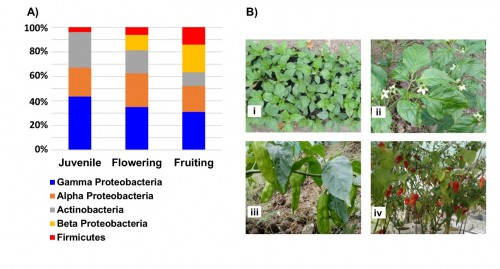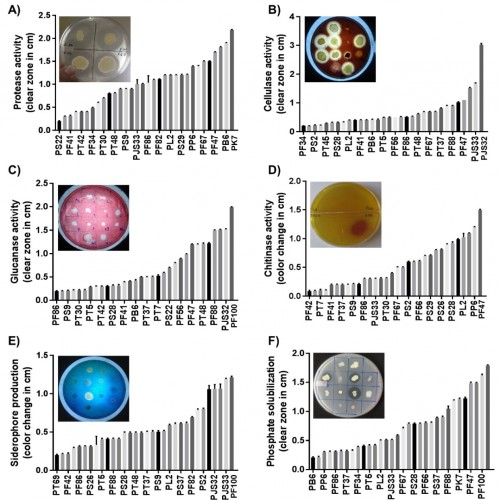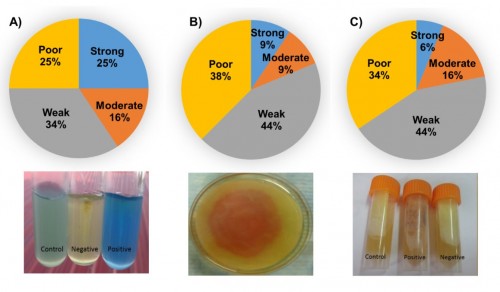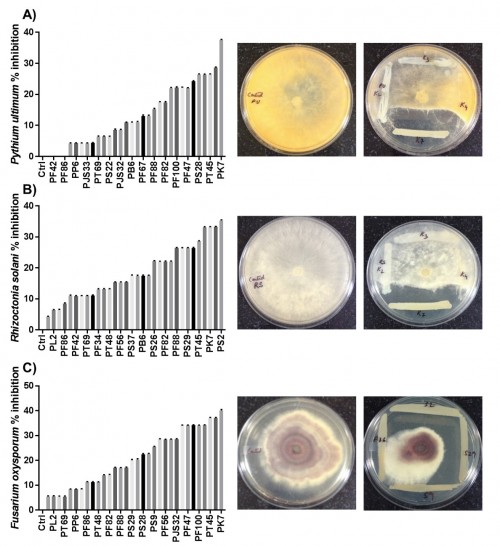Vol. 7, Issue 2 (2019)
Characterization of plant growth promotion and disease control trends of rhizobacteria isolated from Umorok (Capsicum chinense)

Fig. 1: Three different growth stages of umorok rhizosphere are being associated with different types of bacterial species; however, all the identified rhizobacteria were representatives of six classical phyla. A) More bacterial diversity was observed in flowering and fruiting stages with additional beta proteobacteria that were not showing up in the juvenile stage. In the comparative analysis, gamma proteobacteria emerged as the most abundant bacterial variety and Firmicutes were turned out to be least showed organisms in all the three stages of the plant life cycle. B) The juvenile (i), flowering (ii), fruiting (iii), and matured (iv) stages of the umorok plant

Fig. 2: Biochemical test results of 32 potential umorok rhizobacteria along with characteristic biochemical activity clear zone, colony morphology, and color of media in agar plates: A) protease activity B) cellulase activity C) glucanase activity D) chitinase activity E) siderophore production and F) Phosphate solubilization

Fig. 3: Qualitative biochemical tests performed on umorok rhizosphere to demonstrate the action potential based on characteristic color change: A) Nitrogen fixing assay revealed 25% of the assayed bacteria exhibited strong activity, and the color score was attributed based on the blue color intensity observed at the end of the assay, B) IAA production assay showed 9% of the bacteria exhibited strong IAA production, and the activity was measured based on the characteristic red color zone around the rhizobacterial colony, and C) HCN production assay witnessed 6% of the strong bacteria among tested microorganisms based on the color change from yellow to brown or reddish brown

Fig. 4: The dual culture of common fungal pathogens with umorok rhizobacteria exhibited significant pathogen inhibition, and zone of antagonistic inhibition is shown in the PDA plates: A) against Pythium ultimum B) against Rhizoctonia solani and C) against Fusarium oxysporum

Fig. 5: Plant growth and yield indicating physical parameters were quantitatively measured when umorok plant growing on sterile soil is inoculated with different PGPR that was isolated and characterized: A) root length, B) shoot length, C) plant total length from root to shoot, D) root dry weight, E) shoot dry weight, and F) number of fruits harvested were measured after the plant was grown with PGPR, and Burkholderia cepacia PK7 emerged as an efficient rhizobacterial strain though other strains also exhibited statistical significance (p< 0.0001) when triplicate data was subjected to ANOVA




